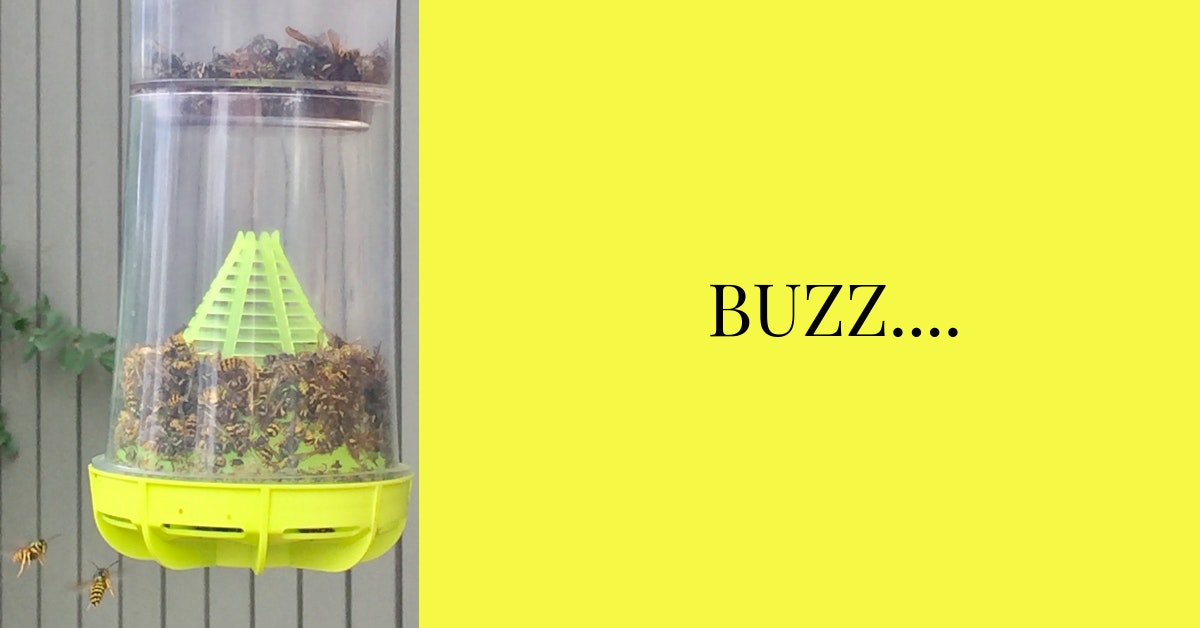What a strange critter!
This time of year a yellowish bee-type critter and its buddies swarm down on you just as you sit down to eat a newly barbecued steak. Or hamburger. Or chicken.
But these bees are not after you – they may be a type of critter called a Vulgar Bee, which are really members of the wasp family. And they love meat.
They will buzz right by you and head for your delicious steak. The more freshly cooked, the better, it seems.
Apparently as your mouth is watering, so is theirs.
Monday night, Nancy and I were barbecuing kabobs. Two were beef and two bacon-wrapped chicken. They cooked up nicely and smelled with that tantalizing odor. We were hungry and anxious to dive into this wonderful meal.
As we sat down on our picnic table, we were descended upon by six of these guys. They buzzed and swarmed all around us and landed on our plates faster than we could shoo them away. Who are these buggers?
According to Wikipedia: Yellowjackets are social hunters living in colonies containing workers, queens, and males (drones). Colonies are annual with only inseminated queens overwintering. Fertilized queens are found in protected places such as in hollow logs, in stumps, under bark, in leaf litter, in soil cavities, and in man-made structures.
Queens emerge during the warm days of late spring or early summer, select a nest site, and build a small paper nest in which they lay eggs. After eggs hatch from the 30 to 50 brood cells, the queen feeds the young larvae for about 18 to 20 days. Larvae pupate, and then emerge later as small, infertile females called workers. Workers in the colony take over caring for the larvae, feeding them with chewed up meat or fruit. By midsummer, the first adult workers emerge and assume the tasks of nest expansion, foraging for food, care of the queen and larvae, and colony defense.
From this time until her death in the autumn, the queen remains inside the nest, laying eggs. The colony then expands rapidly, reaching a maximum size of 4000 to 5000 workers and a nest of 10,000 to 15,000 cells in late summer. (This is true of most species in most areas; however, vespula squamosa, in the southern part of its range, may build much larger perennial colonies populated by scores of queens, tens of thousands of workers, and hundreds of thousands of cells.)
At peak size, reproductive cells are built with new males and queens produced. Adult reproductives remain in the nest fed by the workers. New queens build up fat reserves to overwinter. Adult reproductives leave the parent colony to mate. After mating, males quickly die, while fertilized queens seek protected places to overwinter. Parent colony workers dwindle, usually leaving the nest to die, as does the foundress queen. Abandoned nests rapidly decompose and disintegrate during the winter. They can persist as long as they are kept dry, but are rarely used again. In the spring, the cycle is repeated; weather in the spring is the most important factor in colony establishment.
Check out additional columns at www.billsniffin.com. He has published six books. His coffee table book series has sold 34,000 copies. You can find more stories by Bill Sniffin by going to CowboyStateDaily.com.





